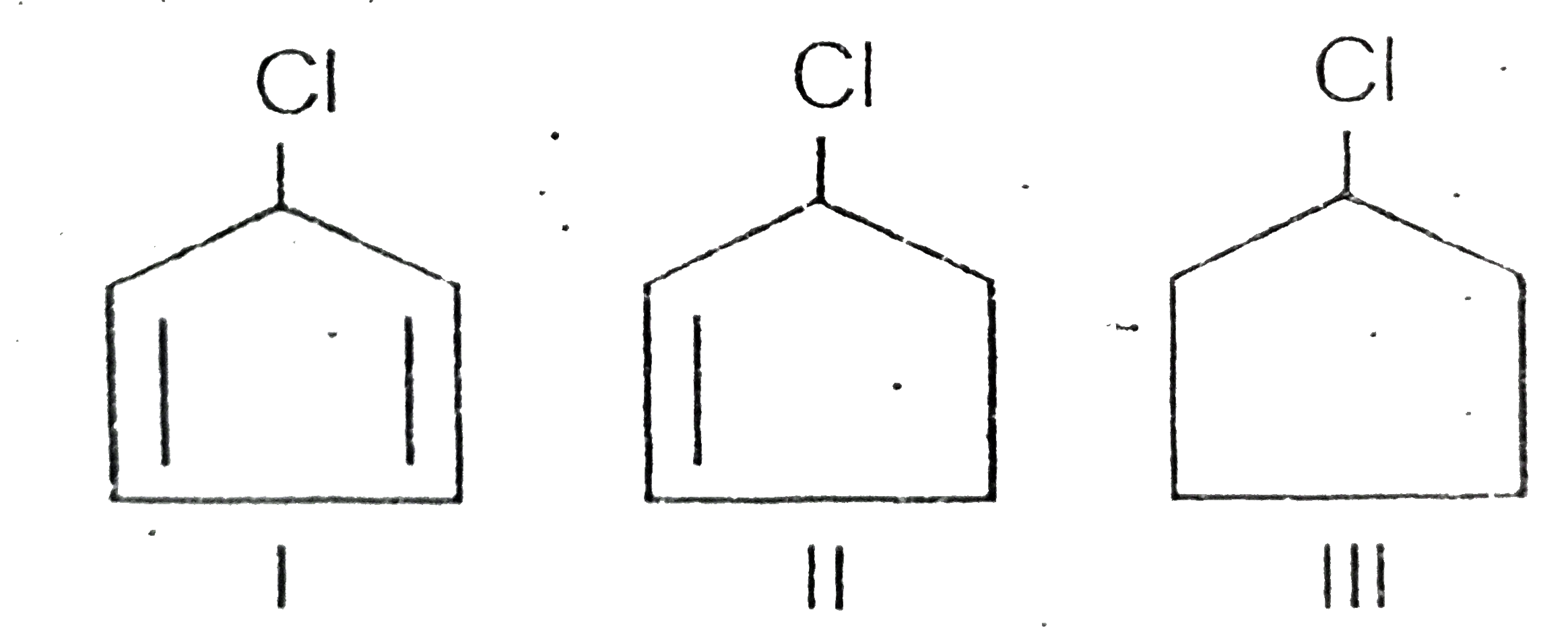The correct order of reactivity in alkali metals is:
Li>Na>K
Na>Li>K
K>Li>Na
K>Na>Li
The correct Answer is:D
To determine the correct order of reactivity in alkali metals, we can follow these steps:
1. Identify the Alkali Metals:
- Alkali metals are found in Group 1 of the periodic table. The common alkali metals include Lithium (Li), Sodium (Na), and Potassium (K).
2. Understand Electron Configuration:
- Alkali metals have one electron in their outermost shell, which gives them the general electronic configuration of ns¹. This means they have a strong tendency to lose this single electron to achieve a stable electronic configuration similar to that of the nearest noble gas.
3. Reactivity Trend:
- The reactivity of alkali metals increases as you move down the group in the periodic table. This is because as you go down the group, the atomic size increases, and the outermost electron is further from the nucleus. This makes it easier for the atom to lose the outer electron.
4. Compare Reactivity of Lithium, Sodium, and Potassium:
- Among Lithium, Sodium, and Potassium:
- Lithium (Li) has the smallest atomic size and is the least reactive.
- Sodium (Na) is more reactive than Lithium.
- Potassium (K) has the largest atomic size among the three and is the most reactive.
5. Conclusion:
- Therefore, the correct order of reactivity in alkali metals from highest to lowest is:
- Potassium (K) > Sodium (Na) > Lithium (Li).
Final Answer:
The correct order of reactivity in alkali metals is: Potassium > Sodium > Lithium.
---
- Alkali metals are found in Group 1 of the periodic table. The common alkali metals include Lithium (Li), Sodium (Na), and Potassium (K).
- Alkali metals have one electron in their outermost shell, which gives them the general electronic configuration of ns¹. This means they have a strong tendency to lose this single electron to achieve a stable electronic configuration similar to that of the nearest noble gas.
- The reactivity of alkali metals increases as you move down the group in the periodic table. This is because as you go down the group, the atomic size increases, and the outermost electron is further from the nucleus. This makes it easier for the atom to lose the outer electron.
- Among Lithium, Sodium, and Potassium:
- Lithium (Li) has the smallest atomic size and is the least reactive.
- Sodium (Na) is more reactive than Lithium.
- Potassium (K) has the largest atomic size among the three and is the most reactive.
- Therefore, the correct order of reactivity in alkali metals from highest to lowest is:
- Potassium (K) > Sodium (Na) > Lithium (Li).
The correct order of reactivity in alkali metals is: Potassium > Sodium > Lithium.
Topper's Solved these Questions
- BOOK - ICSECHAPTER - THE PERIODIC TABLE EXERCISE - TOPIC 1 Modern Periodic Table and its Periodicity (2 Marks Questions )50videos
THE PERIODIC TABLE
- BOOK - ICSECHAPTER - THE PERIODIC TABLE EXERCISE - TOPIC 1 Modern Periodic Table and its Periodicity (3 Marks Questions )33videos
THE PERIODIC TABLE
- BOOK - ICSECHAPTER - THE PERIODIC TABLE EXERCISE - EXERCISE 5(C)60videos
THE PERIODIC TABLE
- BOOK - ICSECHAPTER - THE LANGUAGE OF CHEMISTRYEXERCISE - EXCERCISE 1(C ) (Correct the following statement)21videos
THE LANGUAGE OF CHEMISTRY
- BOOK - ICSECHAPTER - WATEREXERCISE - TOPIC 2 Solution (5 MARKS QUESTIONS)5videos
WATER
Similar Questions
Knowledge Check
- Question 1 - Select One
The alkali metals
Aform salt-like hydridesBform predominantly covalent saltsCshow decreased chemical reactivity with oxygen in going from Li to CsDshow increasing electronegativity form Li to Cs. - Question 2 - Select One or More
Pick the correct orders of reactivity:
A B
B C
C D
D
The correct order of mobility of alkali metal ions in aqueous solution is
View SolutionAmong the following

The correct order of reactivity of chloride isView SolutionAlkali metals show-
View SolutionThe correct order of reactivity of hydrogen halides with ethyl alcohol is
View SolutionIdentify the correct order of reactivity in electrophilic substitution reactions of the following compounds :
 View Solution
View SolutionAlkali metals act as
View Solution

